|
Size: 3156
Comment:
|
Size: 4379
Comment:
|
| Deletions are marked like this. | Additions are marked like this. |
| Line 50: | Line 50: |
| === Hunting a digital fox at 5GHz === 5GHz networks are generally deployed to cover larger distances and thus cover a wide area. Even a single or a few “evil” Wi-Fi transmitters may significantly degrade the performance of other devices and hinder a portion of the free spectrum useless. The talk is based on real events and will teach you the basic approach to analysing the spectrum at a given location and choosing a frequency, pinpointing the source of a wireless node performing a De-Auth attach on your node or generally spamming the spectrum, likely as a result of an infection with malicious code. * Length: 45min with 30min for the talk and 15min for discussion/demonstration. === Wireless optical networking with KORUZA === After a brief introduction to wireless optical / free-space optical networking history and an overview of the technology you will be prompted to discuss ideas and play around with a low-cost 3D printable wireless optical system KORUZA (www.koruza.net) and get tutored into establishing 100m long 1Gbps links, so one the design files are released open-source and parts/units made available, you will be able to start deploying such links as well. * Length: 60min |
Agenda
The agenda will be set after the workshop submission deadline, 1st of May. We will try to keep a maximum of 4 hours of talks per day, including breaks.
Proposed workshops
DIY ISP Meeting
Meeting of diy-isp from all over the world. We would like to continue our discussion that started at the 30C3 and FOSDEM and see how we can grow as community and share our knowledge about all the topics involved in changing the internet landscape.
Diyisp.org Project wiki, Pad with notes from the FOSDEM meeting, Pad with notes from the 30c3 meeting
- Length: one to two hours
- Requirements: a place for 15+ people and a projector would be nice
BATMAN developers community meeting
Batman-adv users (wireless communities, commercial projects or other) may present their way of using batman-adv in real world setups to the present developers and batman users. The goal is to foster exchange about where and how batman-adv is used today, what are the challenges / difficulties while doing so and what can be done to further improve batman-adv.
- Length: one to two hours
- Requirements: a place for 15+ people and a whiteboard would be nice
Troubleshooting MTU problems on IPv4 and IPv6 networks
Ninux Roma is a Native IPv6 network with legacy support to IPv4. Usually we expect 1500 bytes of MTU and a boring NOC life. Unfortunately life is different. All kind of tunneling (VLAN, GRE, TINC, MPLS) are deployed on the Internet, eating bytes out of the MTU. Some mesh routing protocols use tunneling techniques themself. IPv4 packet fragmentation introduces bad performances but a working IPv4 end to end connectivity even if some link have a smaller MTU than needed.
In the IPv6 Internet a MTU problem can blackhole your traffic. In this talk we will see some well known tools (ping6, radvd), and we will understand how to use them to check the end to end MTU.
- Length 40 minutes + questions.
- Requirements: Projector.
DFS in 5 GHz mesh networks
The 5 GHz band is an interesting alternative to the crowded 2.4 GHz ISM band to set up mesh networks. However, DFS (Dynamic Frequency Selection) support is required in many countries to avoid disturbing primary users (e.g. military or weather radar systems), and DFS support was not available in open source drivers until last year.
In this talk I'll present what DFS is and how it can be handled, summarise the current status in open source drivers and userspace tools, and discuss limitations and requirements to get it running in mesh networks.
- Length: 60 minutes (30-40 minutes talk time and 10-15 minutes for questions)
- Requirements: Projector.
Hunting a digital fox at 5GHz
5GHz networks are generally deployed to cover larger distances and thus cover a wide area. Even a single or a few “evil” Wi-Fi transmitters may significantly degrade the performance of other devices and hinder a portion of the free spectrum useless. The talk is based on real events and will teach you the basic approach to analysing the spectrum at a given location and choosing a frequency, pinpointing the source of a wireless node performing a De-Auth attach on your node or generally spamming the spectrum, likely as a result of an infection with malicious code.
- Length: 45min with 30min for the talk and 15min for discussion/demonstration.
Wireless optical networking with KORUZA
After a brief introduction to wireless optical / free-space optical networking history and an overview of the technology you will be prompted to discuss ideas and play around with a low-cost 3D printable wireless optical system KORUZA (www.koruza.net) and get tutored into establishing 100m long 1Gbps links, so one the design files are released open-source and parts/units made available, you will be able to start deploying such links as well.
- Length: 60min
Social events
Thursday morning: Activity outside of the sublab and without laptops! More details to follow.
more to be announced/proposed.
